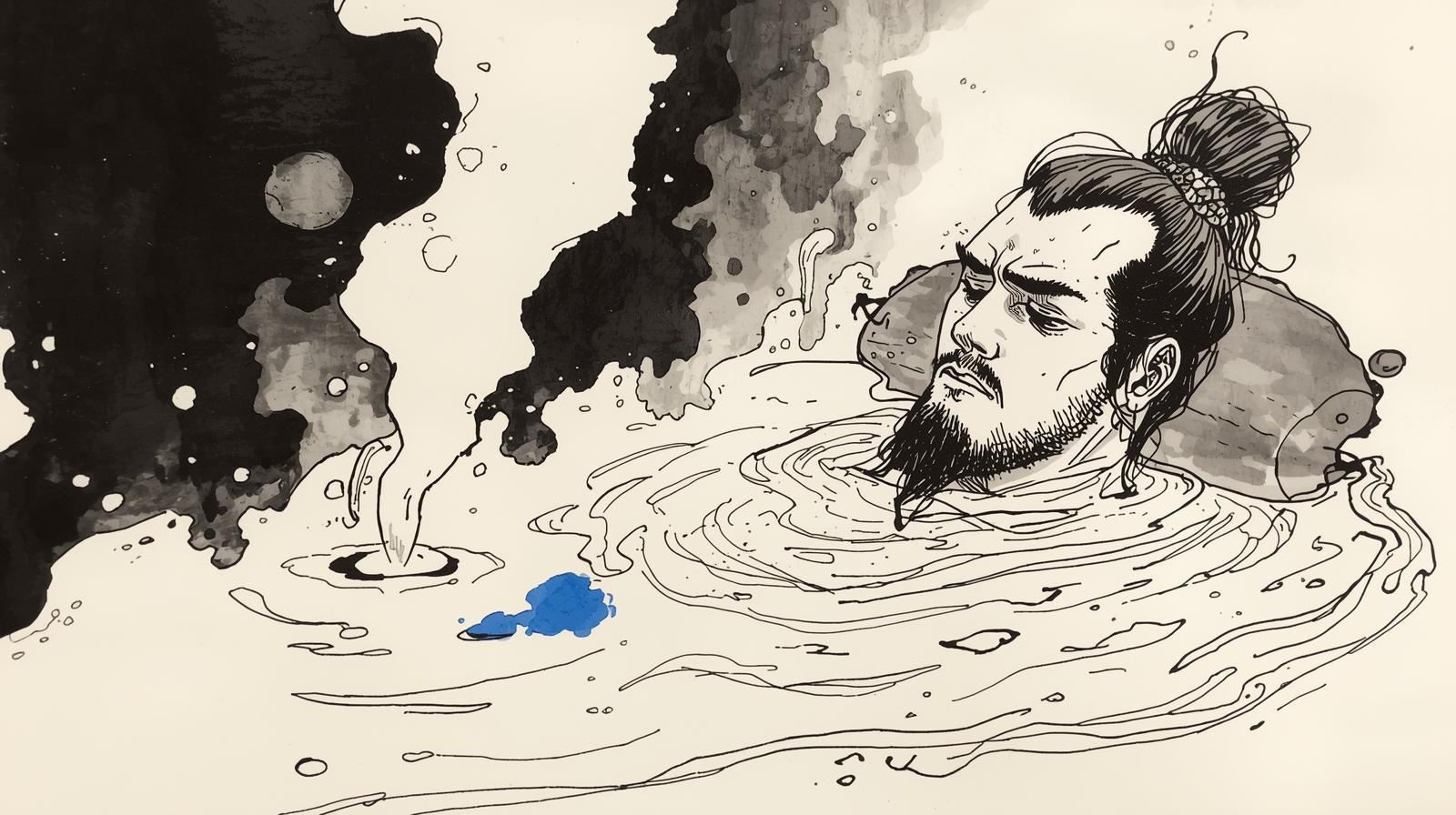1. Healing the Wounds of War
For the samurai, hot springs were more than a place to relax — they were a natural medicine.
After battles, warriors often went to heal their sword cuts, bruises, or frostbite.
Famous warlords like Uesugi Kenshin visited Matsunoyama Onsen in Echigo, and Takeda Shingen used Shimobe Onsen, which later became known as Shingen’s Hidden Hot Springs.
He even allowed his soldiers to bathe there to recover from injuries.
2. A Place for Calm and Reflection
Hot springs were also a place to quiet the mind.
Soaking in warm water and watching the rising steam was a kind of Zen practice — a time to let go of thoughts and reconnect with one’s inner self.
For the samurai, this calm was not weakness.
It was the pause before the next battle, a moment to regain focus and strength.
3. The Bathhouse as a Secret Meeting Room
Surprisingly, hot springs also served as informal meeting places.
Without armor, samurai met as equals — man to man.
In the open atmosphere of the bath, allies and rivals could talk freely, exchange information, or even form secret alliances.
In this sense, the bath became a place of diplomacy — a “Hot Spring Strategy.”
4. Rest and Renewal
During the Edo period, when peace returned, samurai began visiting hot springs for rest and recreation.
Some feudal lords were even granted official leave for bathing.
It was considered part of self-care — to heal the body, clear the mind, and prepare for future duties.
5. The Spirit Lives On
Even today, we visit hot springs to refresh body and mind.
For the samurai, it was the same.
Hot water was a way to heal without fighting — to recover strength before the next challenge.
In a way, the hot spring was the samurai’s quiet battlefield, where the enemy was not another man, but exhaustion itself.



Comments